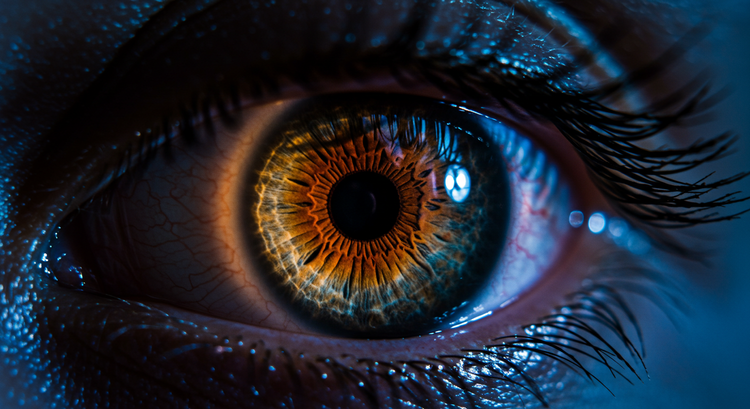
- Introduction
- The Eye as an Optical System — What is Important to Know
- The Brain and Perception: How "Assembly" Creates the Picture
- Perception of Brightness and Contrast — Practical Essence
- Dark and Light Adaptation — Key Facts
- Color: Spectral Sensitivity and Thresholds
- Color Adaptation and Fatigue
- Practical Conclusions for Lighting Control
- Summary and Resources
- Conclusion
Introduction
Proper lighting design begins with an understanding of the physiology and psychology of vision. Understanding the perception of light and color helps reduce visual fatigue, enhance the perception of key objects, and increase the efficiency of lighting control systems in rooms and facilities. For a deep technical foundation, we rely on material from
The Eye as an Optical System — What is Important to Know
The eye is the first "line of filtration" for visual information: the cornea, lens, and retina form the image and set the basic spectral-intensity profile of signals that will reach the brain. The lens and curvature of the eyeball provide focusing and sharpness; the retina contains cones and rods with different sensitivities to light and wavelengths. These basic properties determine which details and colors will be available at all for subsequent processing by the brain.
The Brain and Perception: How "Assembly" Creates the Picture
The brain does not simply display data from the retina — it interprets them: subtracts the background, evaluates contrasts, corrects color, eliminates noise, and forms the meaningful and emotional part of the visual experience. Therefore, the same light source can "read" differently depending on the context of the scene and the viewer's previous visual experience.
Perception of Brightness and Contrast — Practical Essence
Our sensation of brightness depends not only on absolute illuminance but also on the contrast between the area of interest and the background. Contrast is the main tool for managing attention: brighter = attracts attention. At the same time, eye adaptation changes the perceived level of brightness over time, so a static "flash" loses its effect if contrast dynamics are not maintained.
Dark and Light Adaptation — Key Facts
Adaptation processes allow the eye to cover a huge range of brightnesses (on the order of 10^11), but adaptation is a temporal process. Full light adaptation takes about 20–30 minutes, the practical part — 5–8 minutes; dark adaptation shows a characteristic "break" during the transition from cones to rods and depends on the level of pre-adaptation. These facts influence how to plan changes in scenes/zones of lighting and delays between critical scene changes.
Key Idea: To maintain the sensation of brightness, it is better to increase brightness gradually or keep contrast local, rather than flooding the scene all at once.
Color: Spectral Sensitivity and Thresholds
The eye's sensitivity to color is non-uniform across the spectrum: there are peaks in the blue-green and yellow-green regions; the color perception threshold curve shows that recognizing color requires a higher level of brightness than for achromatic perception. The sensitivity of color receptors also depends on the background level and adaptation.
(This is where, in staging and engineering, it is important to consider the "spectral sensitivity" of materials and light sources — once correctly selected spectrum provides a noticeable gain in readability and color transmission.)
Color Adaptation and Fatigue
If the viewer is kept in one dominant color for a long time, sensitivity to that color decreases (color fatigue), and subsequent scenes in contrasting tones will be perceived distorted until sensitivity is restored. This phenomenon is called color adaptation and directly affects the order of scenes, selection of filters, and duration of color floods.
Practical Conclusions for Lighting Control
- Use local contrast accents — they focus attention more strongly than overall flooding.
- Plan transitions in brightness and color taking into account adaptation time (5–30 minutes depending on the task).
- For night work/night shifts, apply long-wavelength (red) lighting to accelerate adaptation.
Summary and Resources
Understanding the biology of the eye and the psychophysiology of perception is not an academic topic, but a practical tool: it reduces errors in scene design, increases comfort, and helps form a predictable visual agenda for the object. For practical tools and hardware solutions, look at detailed fundamental guides based on the book MAGIC OF LIGHT Practical Guide by Vladimir Lukashevich.
- Fragment from the practical guide “Magic of Light,” published in 2013
- Stage lighting–sound integration: techniques, perception, history, and creative design
- Section: What does a lighting designer create? A dynamic communicative environment
- What "tools" does a lighting designer use? Controllable properties of stage lighting
Look for other brief articles in our blog by tags:
Conclusion
This article provided a brief briefing on the perception of light and color: from the structure of the eye to the temporal laws of adaptation and practical rules for managing attention and color in real projects. Applying these principles will improve the readability of space, safety, and emotional impact from visual scenarios.
